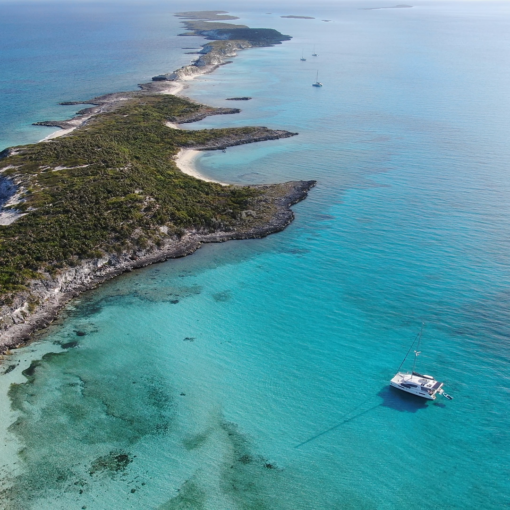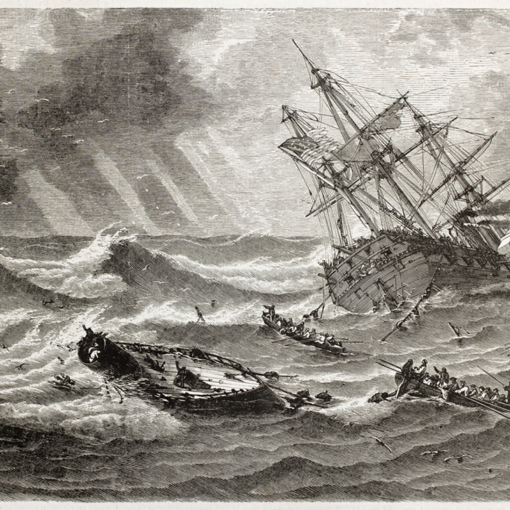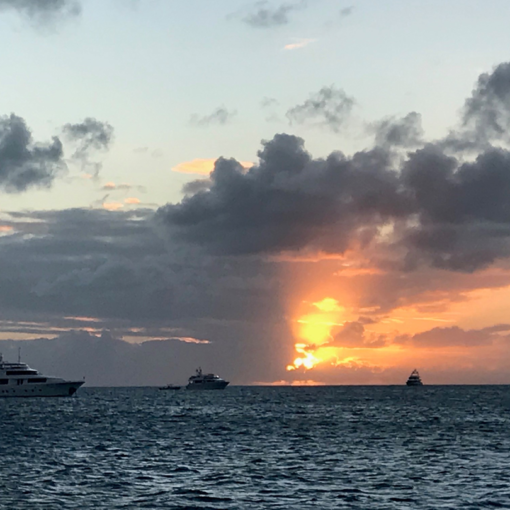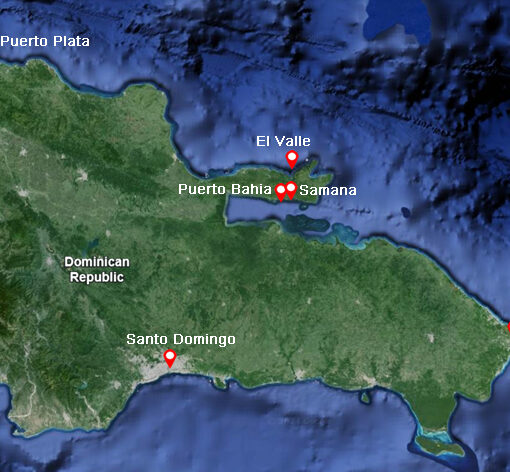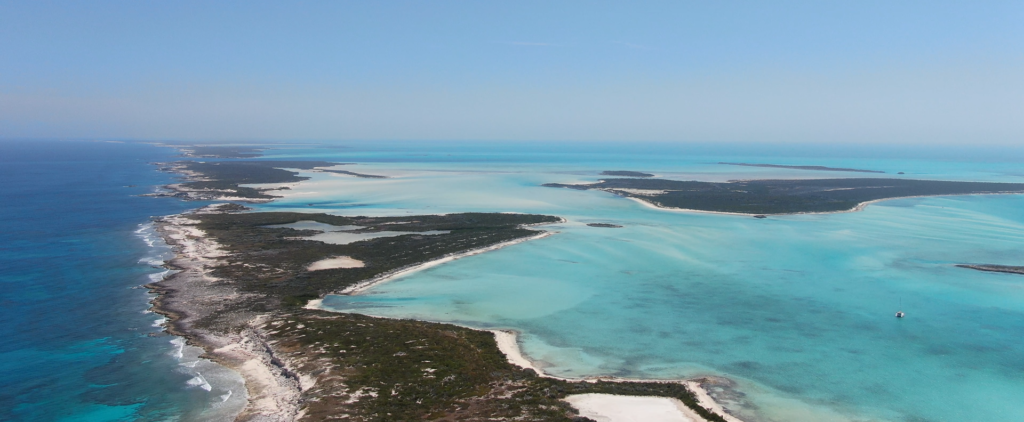
Into the wilderness. This is the outback. The wild west. No one is coming to help. In fact, for much our time here, there was no one, period.
The Ragged Islands are the southern half of a long chain of small islands extending south from Georgetown and Great Exuma, ultimately getting within 70 miles of eastern Cuba. They were historically seldom visited and, with the exception of small Duncan Town at the southern end, are deserted. That is starting to change, in part because YouTube’s Delos spent months here when in lock-down at the start of the Covid pandemic. We were fortunate enough to visit a year after them, still during early Covid limitations, and in mid April when most cruisers have started their trek back north.
Our trip to the Raggeds began in Thompson Bay, Long Island. We had been just north in the Jumentos Cays for a couple weeks when a big cold front appeared in the forecast. Rather than risk it in such isolated and unprotected conditions, we ran up to Long Island, weathered it out, and then ran back down. That also allowed us to use our spinnaker a second time. Downwind is so much better than upwind!
Buena Vista Cay
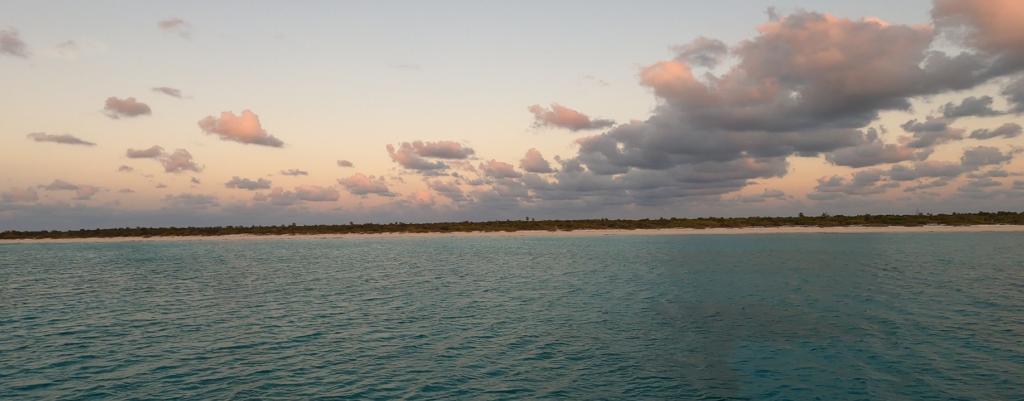
Our first stop was Buena Vista Cay and its 1.5 mile crescent-shaped white beach. It looks fantastic, but upon closer inspection we found the white beach was mostly white rock.
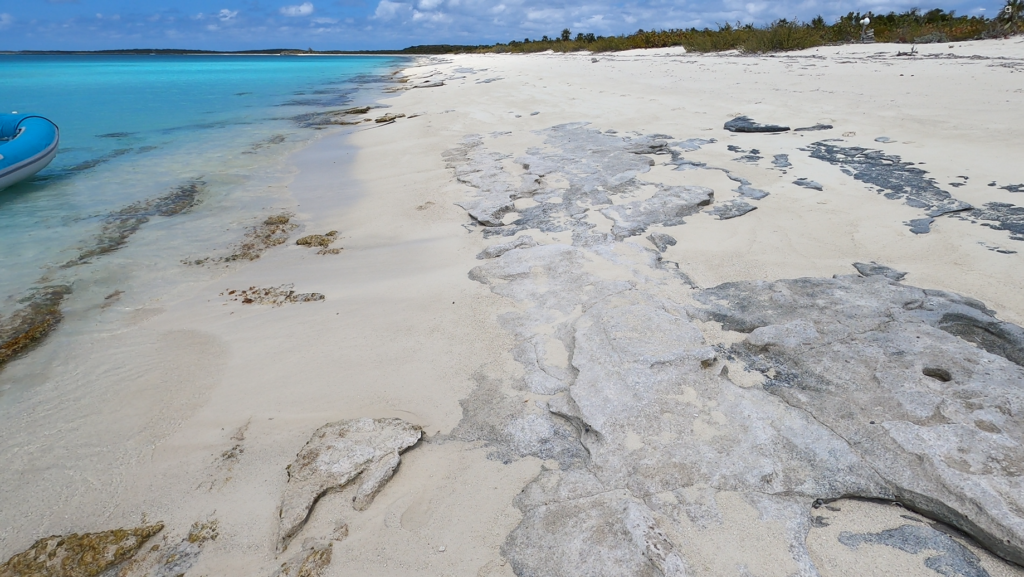
I wanted to move on, but Brenda was tired from the passage so we stayed a few days.
When we arrived, we found that the anchorage was also mostly rock, with a thin layer of sand. We anchored, but I wasn’t happy with the holding. So I grabbed a screwdriver, some string, a scuba weight, and a small float, and headed out in the dinghy in search of sandier pastures. It took quite awhile poking around with the screwdriver, but I found an area of pure sand about a 1/2 mile south of where we were. I marked the spot with my float and proudly headed back. We raised anchor and… turns out the float was easy to see when 2 feet away from it, but really hard to find when 1/2 mile away. My awesome plan suddenly wasn’t looking so awesome. Luckily, we managed to find it and Brenda dropped the anchor right next to the scuba weight. Mission accomplished!
Exploring
One day we took the dinghy around the southern corner to explore the shallows and small islets there. So many interesting things to see!
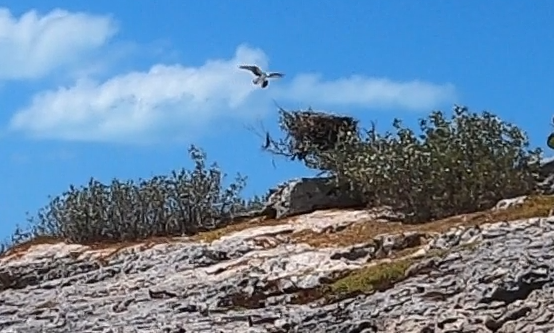
One of our biggest discoveries was yet another Osprey nest – this one being accessible! These nests are huge. This one looked abandoned, so we climbed up the rocks and got a close look. Unlike the deep bowl shape you see from smaller birds, these nest are largely flat on the inside. It was made from all kinds of things, including branches, yarn, and random fishing gear. As we headed back to the dinghy, we noticed an osprey circling overhead. The nest wasn’t abandoned after all. This osprey was carrying a fish and we were close enough to watch it come in for a landing.
While exploring, we were buzzed by a very expensive looking private helicopter. It was going by, apparently saw us, and circled back for a low look before continuing on. We thought perhaps, since there was no one around, they wanted to see if we were in distress and needed help.

Double Breasted Cay

Next up was Double Breasted Cay and its “Two Titty Yacht Club”, created and made famous by YouTube’s Delos and friends. The anchorage is quite shallow and almost enclosed on all sides. A very protected spot. There’s a lot of grass in some areas, so we moved a couple times before finding a sandy patch as far in and close to shore as we dared.
This was the cruising dream. So much water, so many islands, so many beaches, so much awe inspiring solitude. Initially we shared the anchorage with two other catamarans, then had the area for miles around all to ourselves at the end.
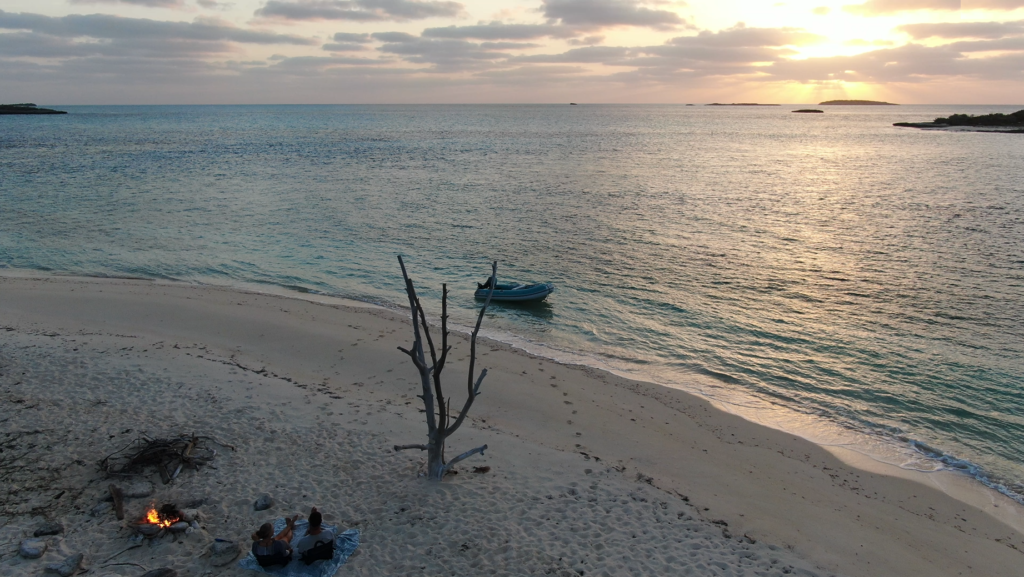
This was my favorite stop of our entire Bahamas season. Ironically, I don’t have much to say about it. Speechless.
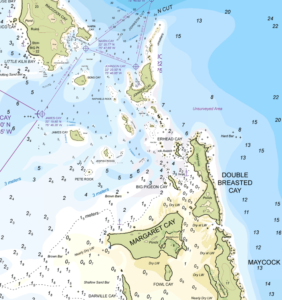
When we weren’t paddle boarding, snorkeling or walking the beach, we used the dinghy to explore the many small islets nearby. One to highlight is Johnson Cay, a stunning white sand beach enclosed in a semi-circle bay. We had considered anchoring here, but found it was exposed to northern swell and dangerously shallow. The following year, we heard a catamaran got stuck there and had to be rescued.
